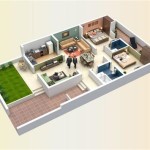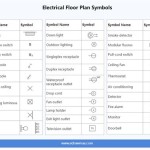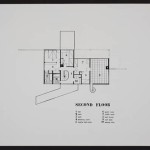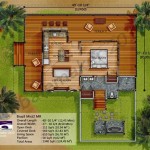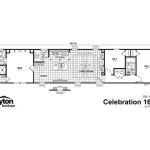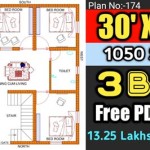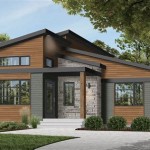Mediterranean Villa House Plans: Design, Features, and Considerations
Mediterranean villa house plans evoke a sense of timeless elegance, drawing inspiration from the architectural styles prevalent in countries bordering the Mediterranean Sea. These plans are characterized by their focus on indoor-outdoor living, natural light, and the use of natural materials. The resulting homes are often perceived as luxurious, comfortable, and well-suited to warm climates.
Understanding the elements that constitute Mediterranean villa house plans is crucial for anyone considering such a design. This understanding extends beyond mere aesthetics and delves into the practical considerations of construction, material selection, and climate adaptability.
Key Characteristics of Mediterranean Villa House Plans
Several defining characteristics distinguish Mediterranean villa house plans from other architectural styles. These characteristics are not merely decorative but are often rooted in functional responses to the climate and available resources of the Mediterranean region.
Firstly, the use of stucco walls is a hallmark. Stucco, a durable and aesthetically pleasing plaster, provides insulation and is well-suited to the warm, dry climates typical of the Mediterranean. It is often left in its natural white or off-white tone to reflect sunlight and keep the interior cool, although other earthy tones are also common. The texture of stucco can range from smooth to heavily textured, adding visual interest to the exterior.
Secondly, tiled roofs are another readily identifiable feature. Red clay tiles, in particular, are synonymous with the Mediterranean style. These tiles are not only visually appealing but also offer excellent insulation and durability. They are resistant to fire and can withstand harsh weather conditions. The distinctive curve of the tiles creates a visually interesting roofline and helps to channel rainwater away from the building.
Thirdly, archways and columns are frequently incorporated into the design. Arches provide structural support while adding a touch of classical elegance. They are often used for doorways, windows, and covered walkways. Columns, similarly, provide support and visual appeal. They can be simple or ornate, depending on the overall aesthetic of the villa. Variations in column design allow for diverse interpretations of the Mediterranean style, ranging from rustic to more refined.
Indoor-Outdoor Living and Spatial Configuration
A defining aspect of Mediterranean villa house plans is the seamless integration of indoor and outdoor spaces. This is achieved through several design strategies aimed at maximizing enjoyment of the surrounding environment.
Large windows and doors are used extensively to bring natural light into the interior and provide views of the outdoors. French doors, in particular, are a common feature, allowing for easy access to patios, courtyards, and gardens. These doors create a visual connection between the interior and exterior, blurring the lines between the two.
Courtyards are often integrated into the design, providing a sheltered outdoor space for relaxation and entertainment. These courtyards are typically enclosed by walls or arcades, creating a sense of privacy and intimacy. They can be adorned with fountains, plants, and outdoor furniture, transforming them into inviting extensions of the living space. Interior courtyards, open to the sky, were a staple in ancient Mediterranean home designs offering light, fresh air and respite from the heat.
Patios and balconies are also common features, providing additional outdoor living areas. Patios are typically located adjacent to the main living areas, while balconies are often found on upper floors, offering panoramic views. Both patios and balconies provide opportunities for outdoor dining, lounging, and enjoying the fresh air.
The spatial configuration of a Mediterranean villa often prioritizes open floor plans, particularly in the main living areas. This creates a sense of spaciousness and allows for easy flow between rooms. The kitchen, dining room, and living room are often combined into a single, large space, fostering a sense of connection and encouraging social interaction. This open concept layout caters to a relaxed and informal lifestyle.
Material Selection and Interior Design
The selection of materials plays a critical role in achieving the authentic Mediterranean aesthetic. Natural materials are typically favored, contributing to the overall sense of warmth and elegance.
Stone is often used for flooring, walls, and other architectural features. Travertine, marble, and limestone are common choices, offering durability and timeless beauty. Stone can be used in its natural form or polished to a high sheen, depending on the desired aesthetic. The use of stone adds a sense of solidity and permanence to the design.
Wood is another essential material, used for doors, windows, trim, and furniture. Dark wood tones, such as walnut and mahogany, are often favored, adding warmth and richness to the interior. Wood can be used in its natural form or stained to enhance its color and grain. The use of wood provides a contrast to the cool tones of the stone and stucco.
Terracotta tiles are frequently used for flooring, particularly in kitchens and bathrooms. These tiles are durable, water-resistant, and visually appealing. They are often left unglazed to maintain their natural texture and color. Terracotta tiles add a rustic touch to the interior, enhancing the overall Mediterranean feel.
Interior design elements often incorporate natural fabrics, such as linen and cotton, for upholstery, curtains, and bedding. These fabrics are lightweight, breathable, and comfortable, making them well-suited to warm climates. Earthy tones and subtle patterns are typically favored, creating a relaxed and inviting atmosphere.
Decorative accents, such as wrought iron details, ceramic pottery, and hand-painted tiles, further enhance the Mediterranean aesthetic. These accents add a touch of personalization and character to the interior, reflecting the artistic traditions of the Mediterranean region.
Adapting Mediterranean Villa House Plans to Different Climates
While Mediterranean villa house plans are ideally suited to warm climates, they can be adapted to suit other climates with careful consideration of design and construction techniques.
In colder climates, insulation becomes particularly important. Walls, roofs, and floors should be well-insulated to minimize heat loss. Double-paned windows and doors can further improve energy efficiency. The use of radiant floor heating can provide comfortable warmth without relying on forced air systems.
In humid climates, ventilation is crucial to prevent moisture buildup and mold growth. Cross-ventilation can be achieved through the strategic placement of windows and doors. Ceiling fans can also help to circulate air and keep the interior cool. Dehumidifiers may be necessary in particularly humid areas.
The orientation of the house should be carefully considered to maximize solar gain in colder climates and minimize it in warmer climates. Overhangs and awnings can provide shade during the summer months, while allowing sunlight to penetrate during the winter months. Landscaping can also be used to provide shade and wind protection.
The selection of materials should also take into account the local climate. For example, using weather-resistant materials for exterior surfaces can help to prevent damage from rain, snow, and ice. Choosing plants that are native to the region can minimize the need for irrigation and maintenance.

Mediterranean House Plan 2 Story Coastal Floor Plans Craftsman

Mediterranean House Plan Luxury 1 Story Home Floor With Pool Style Plans

Mediterranean House Plan 1 Story Floor With Pool Style Plans

Mediterranean Style House Plan 4 Beds 3 5 Baths 4923 Sq Ft 135 166 Houseplans Com

Mediterranean House Plan Tuscan Coastal Contemporary Floor Style Plans

Mediterranean House Plan Coastal Tuscan Floor

Villa Belle House Plan Sater Design Collection

Mediterranean House Plan Small Home Floor Florida Plans Style

House Plan 52931 Mediterranean Style With 4350 Sq Ft 4 Bed

3800 Sq Ft Mediterranean House Floor Plan 4 Bed Bath

